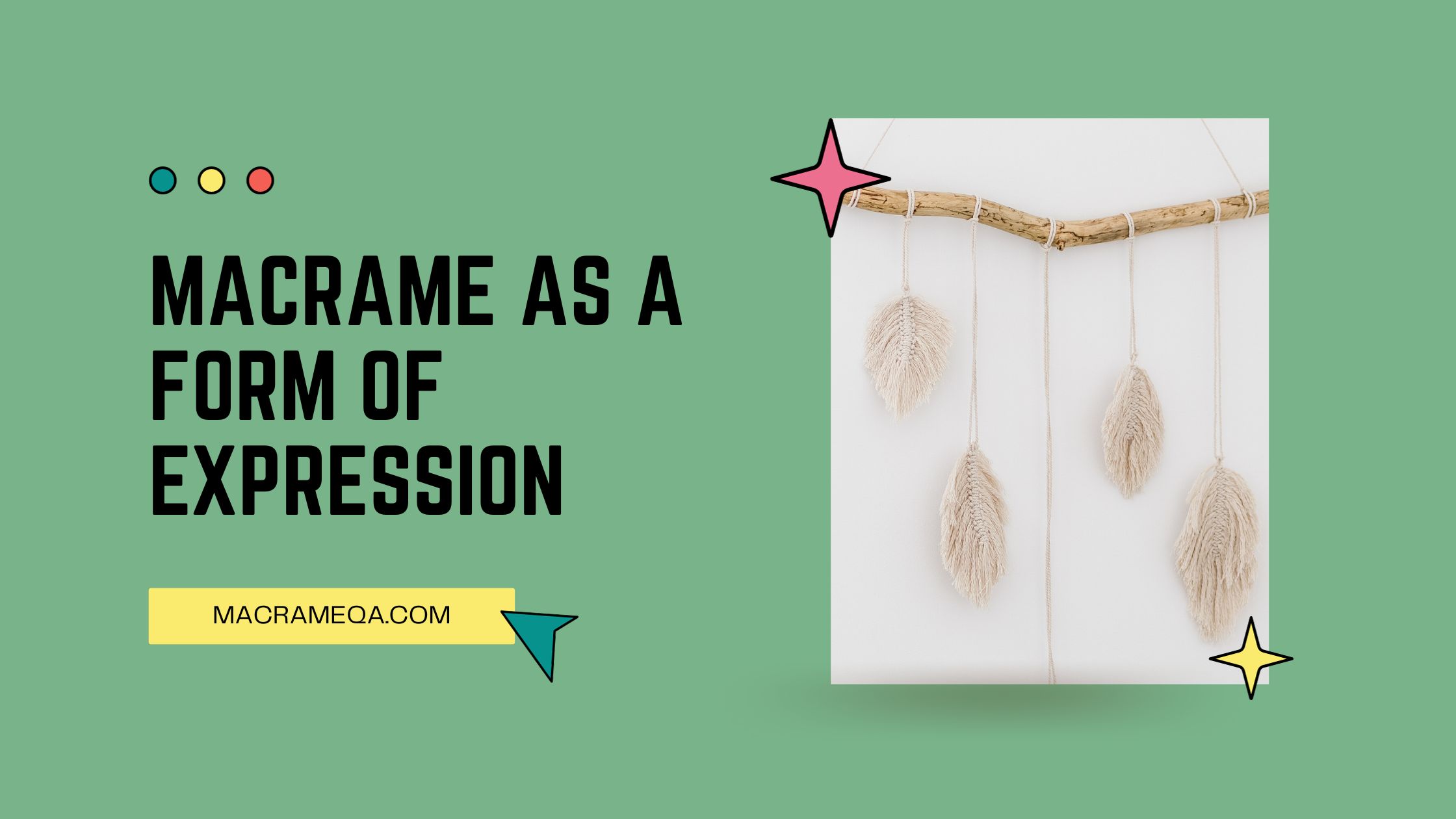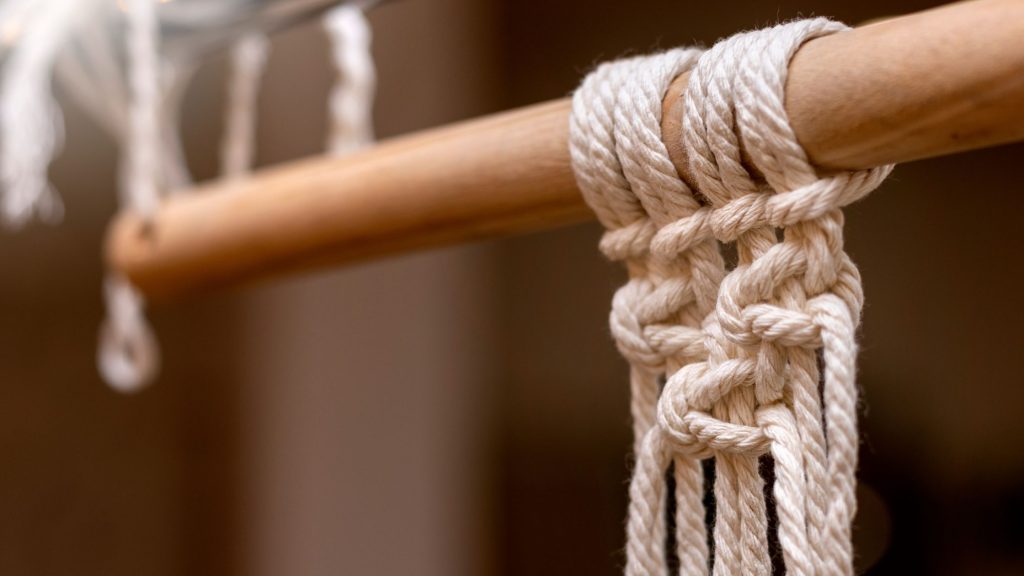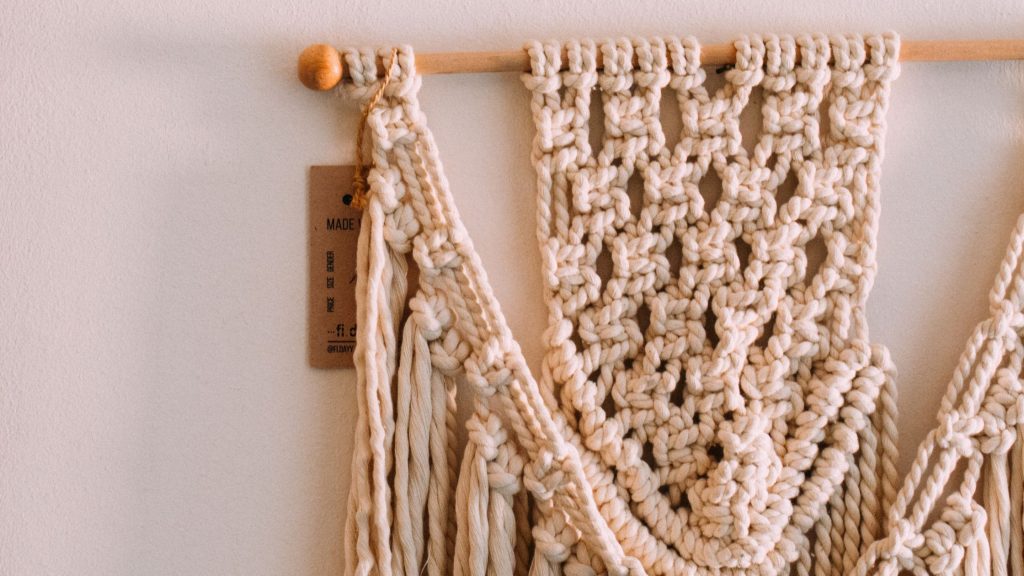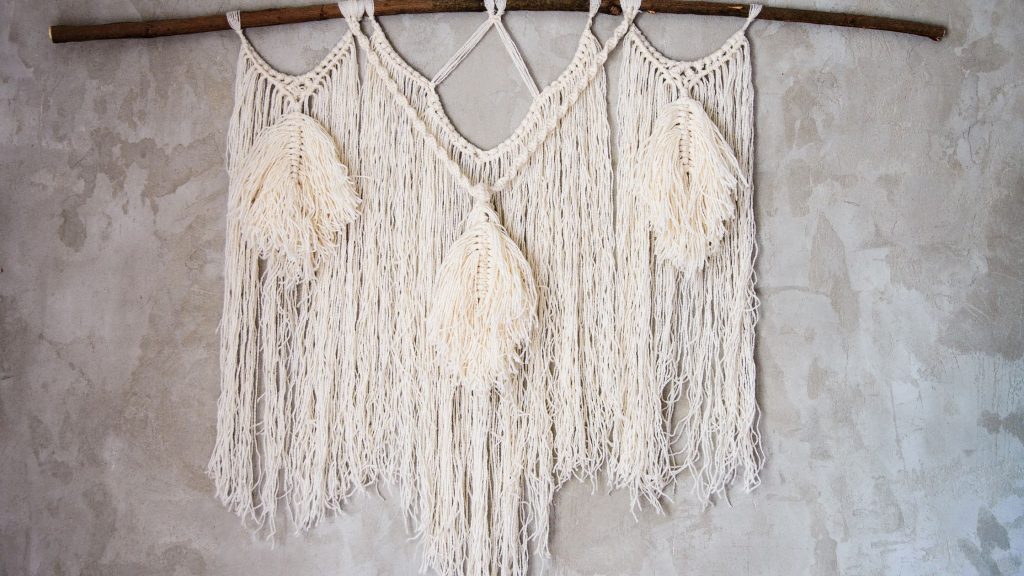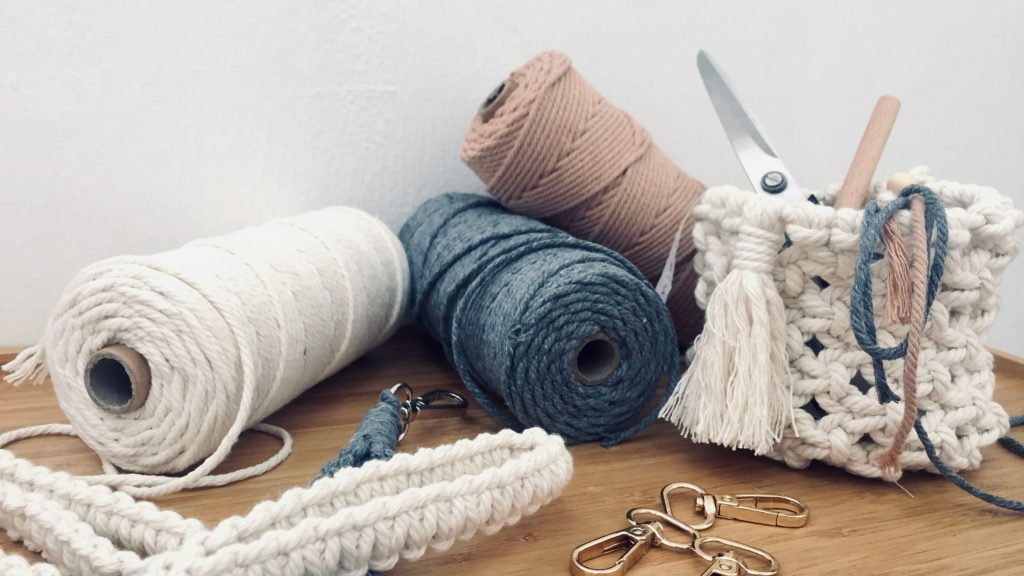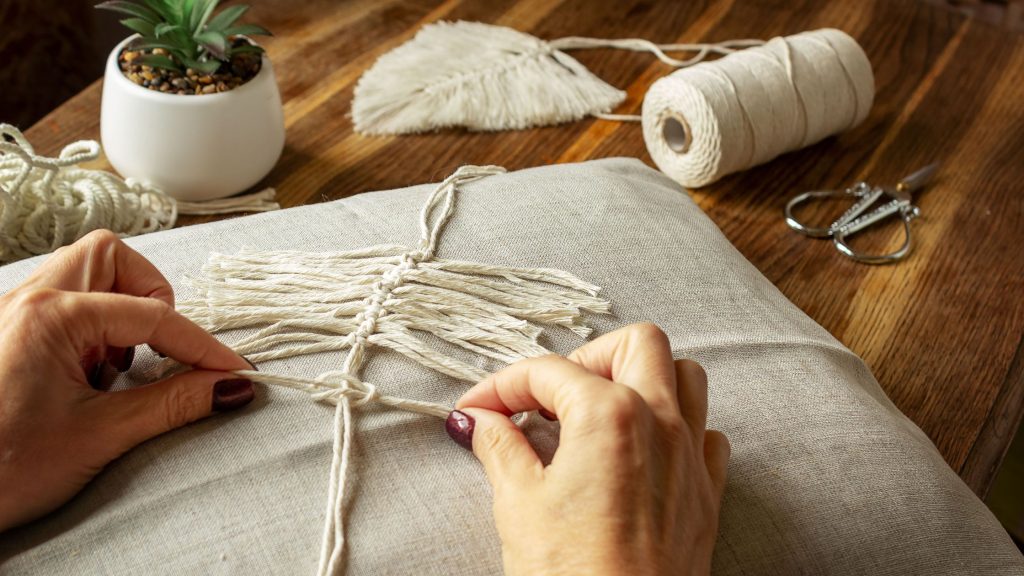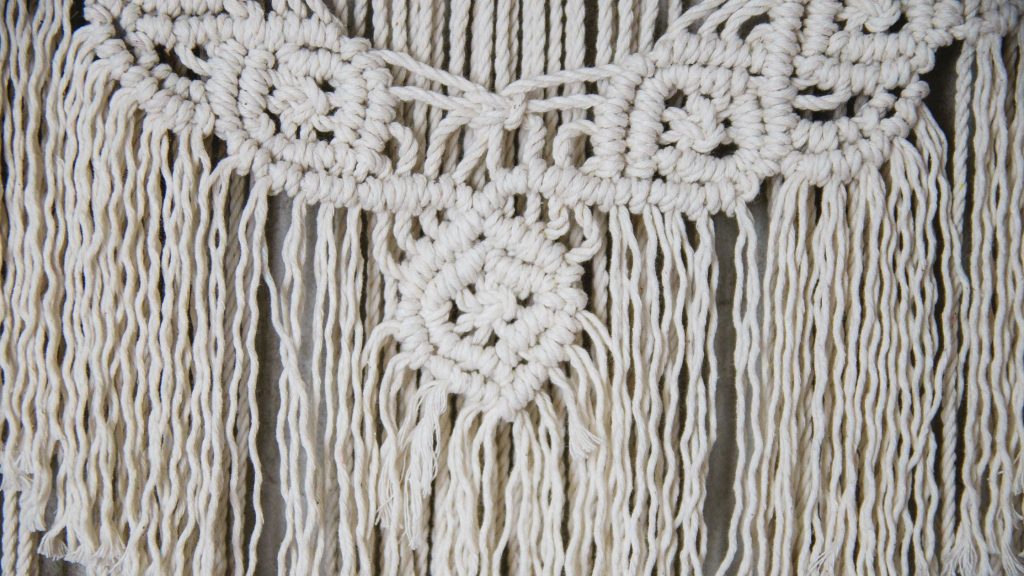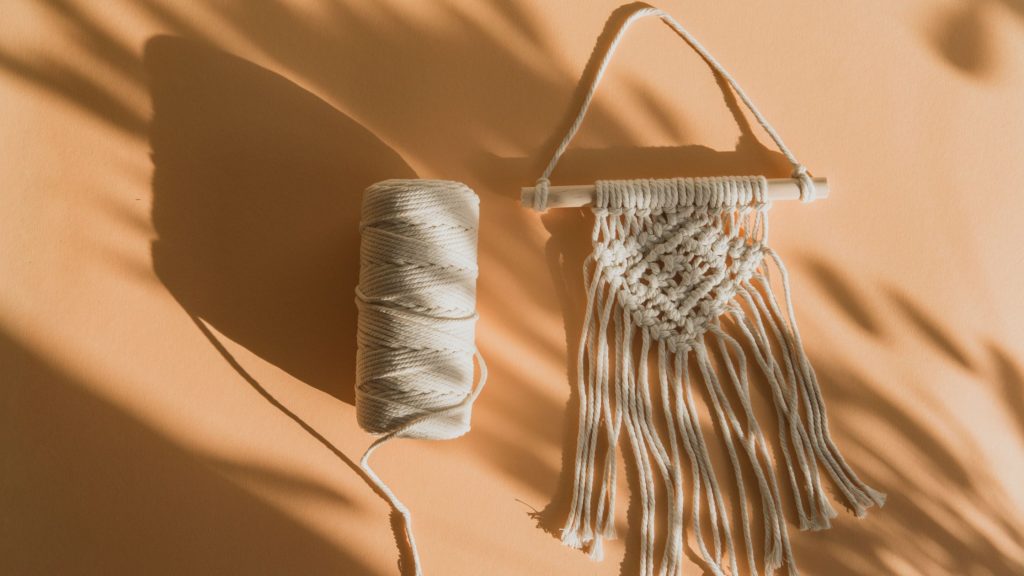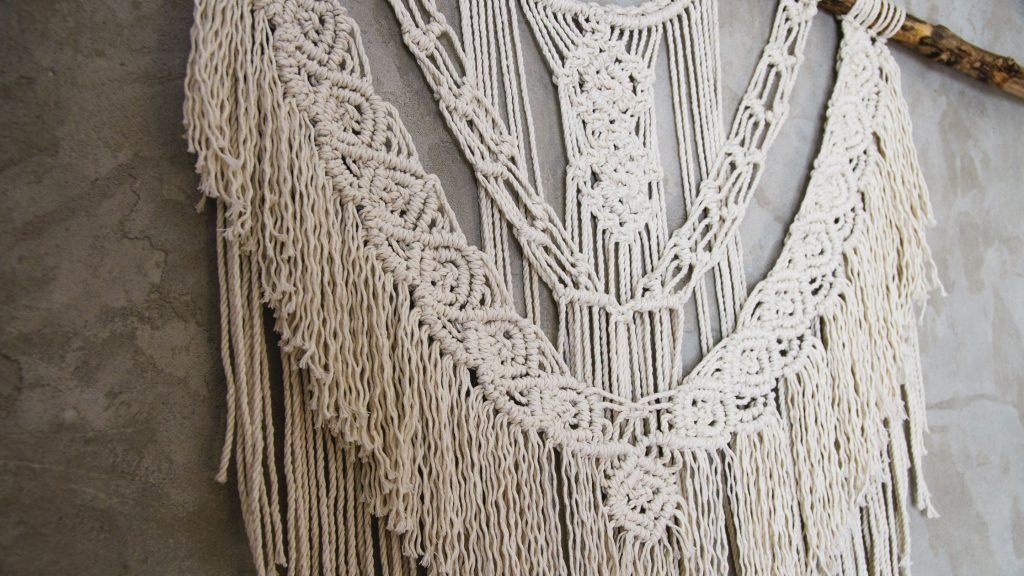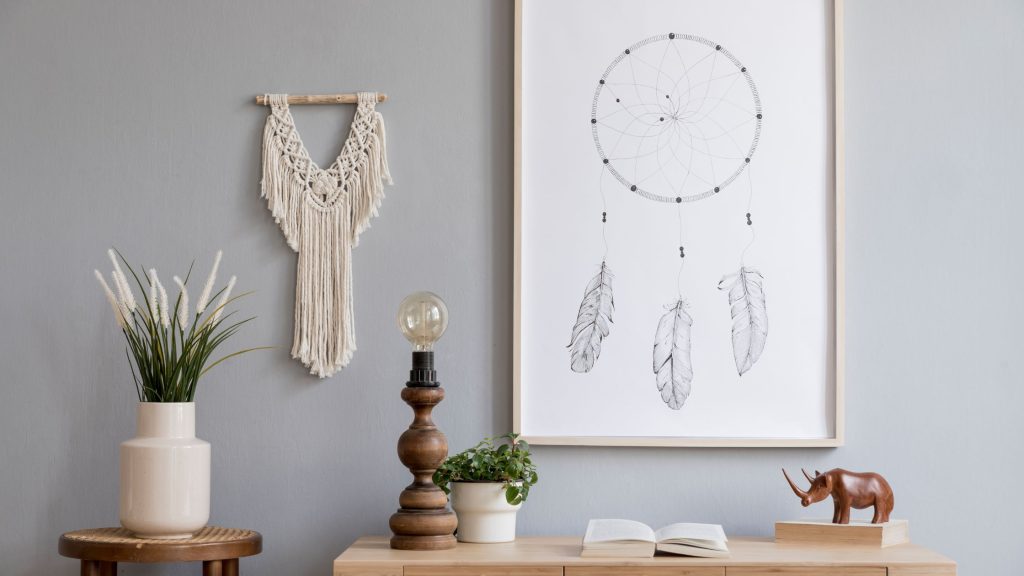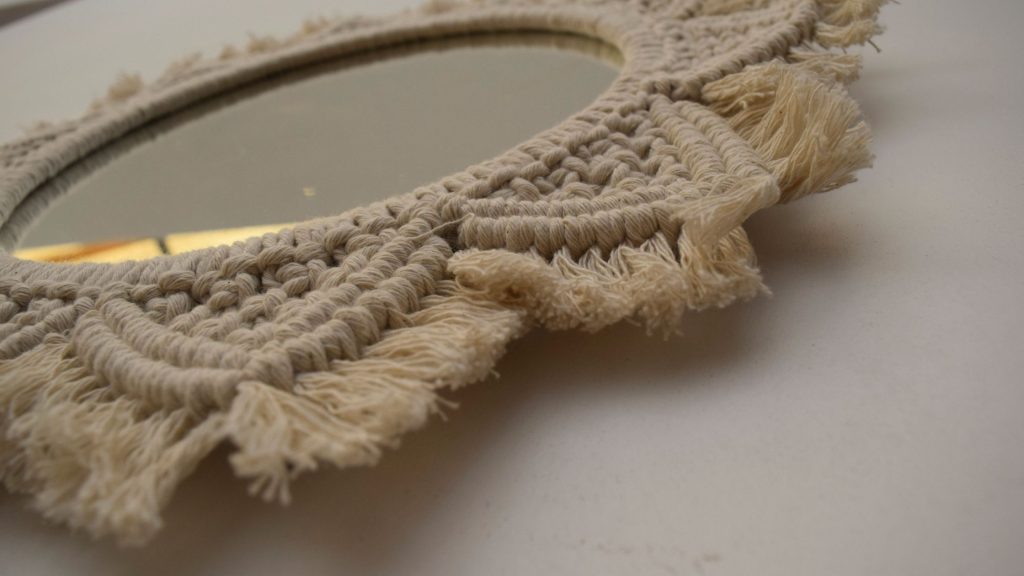Macrame, a timeless art form, holds a historical significance as a powerful means of expression. Originating in ancient times, this intricate technique involves creating intricate patterns by knotting cords together. Through the centuries, macrame has been utilized as a visual language, allowing individuals to convey their emotions, beliefs, and cultural identities. From the intricate designs of sailors charting their adventurous journeys to the intricate patterns created by indigenous communities, macrame has woven itself into the fabric of countless cultures, leaving behind a rich tapestry of stories and traditions. Join us as we explore the historical significance of macrame and discover how this ancient art has shaped the world of expression.
Ancient Origins of Macrame
Origins in Ancient Egypt
The ancient art of macrame dates back thousands of years, with its origins believed to be in Ancient Egypt. The Egyptians were skilled in the art of knot tying and used it to create intricate and decorative textile pieces. Macramé, derived from the Arabic word “miqramah” meaning “fringe,” was originally used to create fringed edges on garments and practical items.
Spread across Asia
From Egypt, the art of macrame spread across Asia, where it thrived in various cultures including China, India, and Persia. Each culture developed its unique styles and techniques, infusing its own artistic traditions into the craft. Macrame became an integral part of Asian craftsmanship and was used to create a wide range of functional and decorative items such as bags, hammocks, and wall hangings.
Influence of Arab traders
Arab traders played a significant role in the spread of macrame throughout the world. As they traveled along trade routes, they carried macrame techniques and patterns with them, introducing the craft to new regions and cultures. The Arab traders’ influence can be seen in macrame’s name and its early association with fringe, reflecting the cultural exchange that occurred during ancient times.
Macrame in the Renaissance
Introduction to Europe
During the Renaissance, macrame made its way to Europe, capturing the attention of artisans and nobility. The intricate knotting techniques and delicate designs fascinated the European elite, who quickly adopted macrame as both a decorative art form and a means of displaying their wealth and status.
Royal and Aristocratic Patronage
Macrame flourished under royal and aristocratic patronage during the Renaissance. Kings, queens, and nobles commissioned exquisite macrame pieces to adorn their palaces and formal gardens. Elaborate tapestries, curtains, and wall hangings showcased the skill and creativity of master macrame artists, becoming prestigious symbols of luxury and refinement.
Application in Fashion and Home Decor
In addition to being revered as a decorative art, macrame found its way into fashion and home decor during the Renaissance. Fashionable women adorned themselves with macrame jewelry, belts, and collars, adding a touch of elegance and opulence to their attire. Macrame curtains, bedspreads, and upholstery became popular choices for adorning the interiors of grand estates, reflecting the prevailing taste for intricate and ornate designs.
Macrame during the Victorian Era
Rise in Popularity
The Victorian Era witnessed a surge in the popularity of macrame, particularly among the middle and upper classes. The refined and intricate craftsmanship of macrame appealed to the Victorian sensibilities, embodying the era’s emphasis on ornamentation and attention to detail. Macrame became a favored pastime for women of leisure, who would spend countless hours creating delicate pieces of art with their nimble fingers.
Macrame as a Feminine Craft
Macrame became associated with femininity during the Victorian Era, as it was predominantly practiced by women. It was considered a delicate and ladylike pursuit, providing an outlet for creativity and self-expression within the confines of society’s expectations. Women would gather in social circles to share patterns, techniques, and stories, forging connections and nurturing their artistic talents through the art of macrame.
Symbolism and Sentimentality
Macrame during the Victorian Era was imbued with symbolism and sentimentality. Many pieces created during this time held hidden meanings, such as love knots or friendship bracelets exchanged between loved ones. These sentimental tokens served as a tangible expression of affection and often became cherished heirlooms, passed down through generations as a symbol of enduring bonds.
Macrame in the Arts and Crafts Movement
The Influence of William Morris
In the late 19th century, the Arts and Crafts Movement, led by influential designer William Morris, sought to revive traditional craftsmanship and celebrate the beauty of handmade objects. Macrame found a place within this movement as artisans sought to reconnect with ancient techniques and embrace the natural materials and organic designs of macrame.
Macrame as a Decorative Art
During the Arts and Crafts Movement, macrame was elevated to the status of a decorative art form. Artisans began to experiment with larger-scale macrame creations, such as room dividers, plant hangers, and elaborate wall hangings. Macrame’s intricate knotting patterns and ability to create texture and depth made it a highly versatile medium for creating statement pieces that blended seamlessly with the ethos of the Arts and Crafts Movement.
Social and Political Statements
Macrame also became a means of making social and political statements during the Arts and Crafts Movement. Artisans used the medium to challenge prevailing norms and advocate for change. Macrame pieces with symbolic motifs and messages were crafted to promote solidarity, equality, and environmental stewardship, reflecting the progressive ideals embraced by the movement’s followers.
Macrame in the 20th Century
Revival in the 1960s and 1970s
Macrame experienced a significant revival during the counterculture movement of the 1960s and 1970s. The craft became closely associated with the bohemian lifestyle, evoking a sense of freedom, individuality, and non-conformity. Macrame plant hangers, wall hangings, and jewelry adorned the homes and bodies of those seeking an alternative way of life.
Macrame as a Symbol of Counterculture
In the 1960s and 1970s, macrame became a symbol of the counterculture movement, representing a rejection of mainstream society’s materialism and embracing a more eco-conscious and communal approach to life. Macrame pieces were often created using natural fibers and recycled materials, reflecting a growing awareness and appreciation for sustainability and repurposing.
Macrame in Modern Art
As the 20th century progressed, macrame found its way into the realm of modern art. Artists began pushing the boundaries of traditional macrame techniques, experimenting with scale, form, and materials. Macrame installations and sculptures became prominent features in galleries and museums, blurring the lines between craft and fine art. These innovative interpretations of macrame showcased its versatility and ability to adapt to contemporary artistic expressions.
Macrame in Indigenous Cultures
Ancient Indigenous Techniques
Macrame has a long-standing presence in indigenous cultures around the world. Indigenous communities, such as the Native Americans and various tribes in Africa and South America, have practiced macrame for generations, passing down the techniques and traditions from one generation to the next. These ancient techniques stand as a testament to the cultural significance and resilience of macrame.
Cultural Significance
Within indigenous cultures, macrame holds deep cultural and spiritual significance. It is often used to create ceremonial attire, symbolic talismans, and sacred objects. Macrame pieces are crafted with intention, incorporating traditional motifs and colors that convey cultural identity, beliefs, and ancestral connections. Through macrame, indigenous communities honor their heritage and foster a sense of belonging and continuity.
Preservation and Revitalization Efforts
Recognizing the importance of preserving indigenous macrame traditions, efforts are being made to revitalize and sustain these ancient techniques. Organizations, artisans, and communities are collaborating to document and share knowledge, pass down skills, and provide economic opportunities for indigenous artists. By valuing and supporting indigenous macrame, these initiatives aim to uphold cultural diversity and empower indigenous communities.
Macrame in Contemporary Design
Macrame as a Trend
In recent years, macrame has experienced a resurgence in popularity as a design trend. Its organic textures and bohemian aesthetic have captivated the modern imagination and found their way into interior design magazines, fashion runways, and social media feeds. Macrame’s ability to infuse spaces with warmth, texture, and a touch of nostalgia has made it a sought-after element for those seeking to create a cozy and inviting ambiance.
Integration in Interior Design
Macrame has become increasingly integrated into interior design, with designers incorporating macrame wall hangings, plant hangers, and curtains into contemporary spaces. The versatility of macrame allows it to complement a range of interior styles, from bohemian and rustic to minimalist and modern. Macrame’s ability to add visual interest and create focal points has made it a popular choice for accentuating various living spaces.
Exploration of New Materials and Techniques
Contemporary artisans are pushing the boundaries of macrame by exploring new materials and techniques. Macrame is no longer limited to natural fibers but extends to incorporate synthetic fibers, metals, and even recycled materials. Knotting techniques have evolved to incorporate innovative patterns, textures, and sculptural elements, further expanding the creative possibilities of macrame in contemporary design.
Macrame and the DIY Movement
Resurgence in Craft Community
The DIY (Do-It-Yourself) movement has played a significant role in the resurgence of macrame. As people seek to reconnect with their creativity and engage in hands-on activities, macrame offers an accessible and rewarding craft that can be learned and practiced at home. The revival of macrame workshops, craft fairs, and online communities has fostered a sense of camaraderie among DIY enthusiasts and reignited the love for this versatile craft.
Online Tutorials and Communities
The digital age has facilitated the widespread dissemination of macrame knowledge and skills through online tutorials and communities. Social media platforms and dedicated websites have provided accessible resources for learning various macrame techniques and sharing creative ideas. This online exchange creates a sense of inclusivity and empowerment, allowing individuals to enhance their macrame skills, connect with like-minded enthusiasts, and showcase their creations to a global audience.
Entrepreneurship and Small Businesses
The DIY movement and the popularity of macrame have also given rise to numerous small businesses and entrepreneurial opportunities. Crafters who have honed their macrame skills often turn their passion into a profitable venture, creating and selling macrame products, and materials, or offering workshops and tutorials. This grassroots entrepreneurship within the macrame community contributes to the revitalization of traditional crafts and fosters economic independence and creativity.
Macrame as a Form of Self-Expression
Individuality and Creativity
Macrame provides a platform for individual self-expression and creative exploration. With its versatility and unlimited design possibilities, macrame allows individuals to infuse their unique style, personality, and artistic vision into their creations. Whether it’s through experimenting with different knotting techniques, incorporating unconventional materials, or adding personal touches, macrame enables individuals to create truly one-of-a-kind pieces that reflect their own identity and aesthetic preferences.
Therapeutic Benefits
Engaging in macrame can have therapeutic benefits for practitioners. The rhythmic and repetitive nature of knotting can induce a meditative state, promoting relaxation and reducing stress levels. Macrame also offers a sense of accomplishment and fulfillment as one creates something tangible and beautiful with their hands. This therapeutic aspect has attracted many individuals seeking a mindful and calming activity in an increasingly fast-paced and digitally centered-world.
Personalized Home Decor and Fashion
Macrame provides a means of personalizing home decor and fashion. By incorporating macrame pieces into their living spaces or wardrobe, individuals can curate a personal style that reflects their taste and values. Macrame wall hangings, plant hangers, and accessories like bracelets or earrings can become statement pieces that tell a story, evoke memories, or simply add a touch of handmade charm to one’s surroundings or appearance.
The Symbolic Meaning of Macrame
Knots and their Meanings
In macrame, knots hold symbolic meanings and can convey various messages. Different types of knots, such as love knots, friendship knots, or unity knots, carry deep significance and can be incorporated into macrame designs to express emotions and intentions. Knots can represent love, unity, protection, and strength, serving as visual representations of the emotions and connections between individuals.
Macrame as a Language
Macrame can be seen as a language of its own, with each knot and pattern holding its own meaning. By combining knots and patterns, macrame artists can communicate complex sentiments and ideas through their creations. Just as words can convey emotions and stories, macrame serves as a visual language, allowing individuals to convey their thoughts and feelings in a tangible and artistic form.
Expressions of Love and Protection
One of the most significant symbolic meanings of macrame is its association with love and protection. Macrame pieces, such as love bracelets or talismans, are often exchanged between loved ones as tokens of affection and a reminder of their bond. Macrame’s intricacy and strength as a craft embody the notion of protection, offering a sense of security and emotional support to those who possess or receive these cherished pieces.
Conclusion
In conclusion, the historical significance of macrame as a form of expression is deeply rooted in ancient civilizations, cultural traditions, and artistic movements. From its origins in Ancient Egypt to its resurgence in contemporary design and the DIY movement, macrame has been a means of creativity, self-expression, and cultural preservation. This versatile craft reflects the ever-changing tastes and aspirations of humanity throughout history, making it a timeless and cherished art form.

